My childhood friend, who had emigrated to Warsaw after our primary school days, would return to my hometown Hong Kong each year, sharing captivating stories of his life there. That ignited a desire within me to visit Poland and to experience the Polish culture. Finally, after years of anticipation, I embarked on this long-awaited journey in May 2024, in order to encounter the ‘other’.
My visit to Wilanów Palace, expecting to be awed by its seventeenth century Baroque architecture, took an unexpected turn with the ‘Chinese Room’. Stepping into this chamber, my ‘porcelain eyes’ were immediately drawn to the exquisite treasures within the cabinet: Arita’s Kakiemon ceramics, Jingdezhen’s classic blue-and-white porcelain and some charming Dehua porcelain figures.
The walls of this room adorned with painted wooden panels depicting Chinese landscapes, and the Chinese-style wooden furniture, reminiscent of my grandparents’ home, created a strange sense of déjà vu.
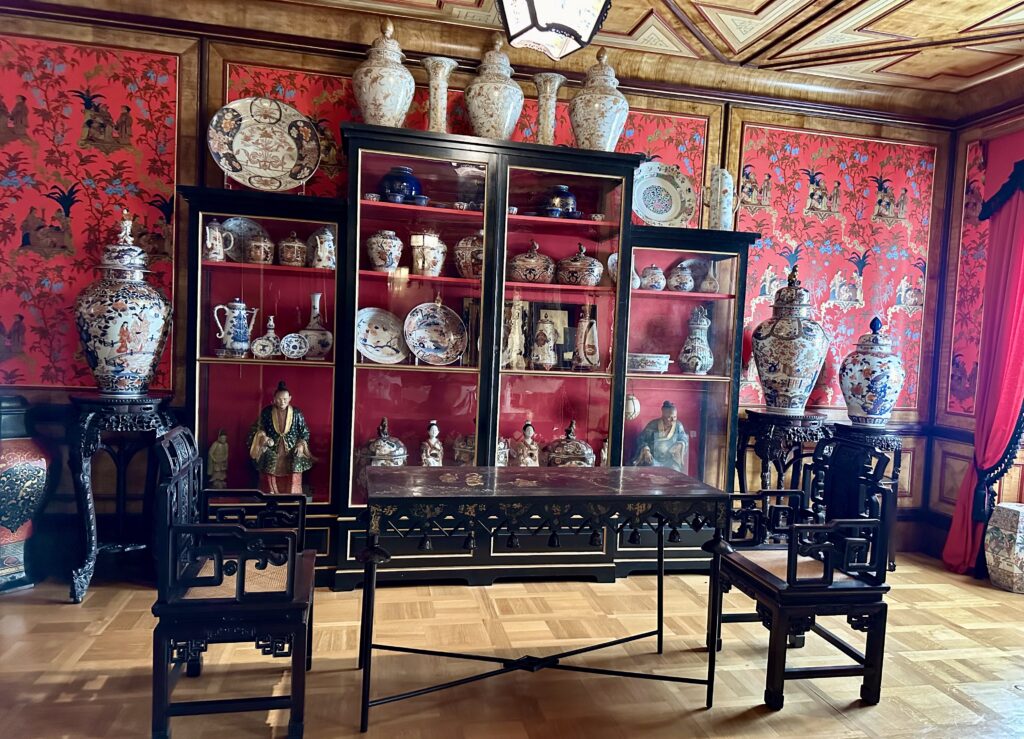
The Chinese Room at Wilanów Palace, Warsaw, Poland (photo private)
Standing amidst this abundance of Chinese objects, a complex feeling arose. These objects, designed to embody the exotic allure of China for eighteenth century Europe, felt profoundly familiar, even domestic to me. This juxtaposition revealed the transient nature of perceived exoticism: a construct built on distance, unfamiliarity, and the longing for the ‘other.’
The encounter unexpectedly turned the lens inward. Rather than experiencing the ‘otherness’ I had anticipated, I found myself confronting my own cultural identity. The experience underscored the ephemeral nature of exoticism itself—how a culture’s ‘other’ can transform into a familiar ‘self’ across time and space.
This experience compelled me to share its story, to delve into the captivating world of Chinoiserie.
But what exactly is Chinoiserie? In art historical terms, it’s a fascinating phenomenon where objects inspired by Chinese aesthetics were created outside of China. While often viewed as imitations or inauthentic in the past, these objects offer valuable insights into cross-cultural exchange and artistic adaptation.
In eighteenth century Europe, ‘Chinese Rooms’ like this one became a hallmark of royal palaces, showcasing a taste for the exotic and demonstrating a fascination with all things ‘Oriental’.
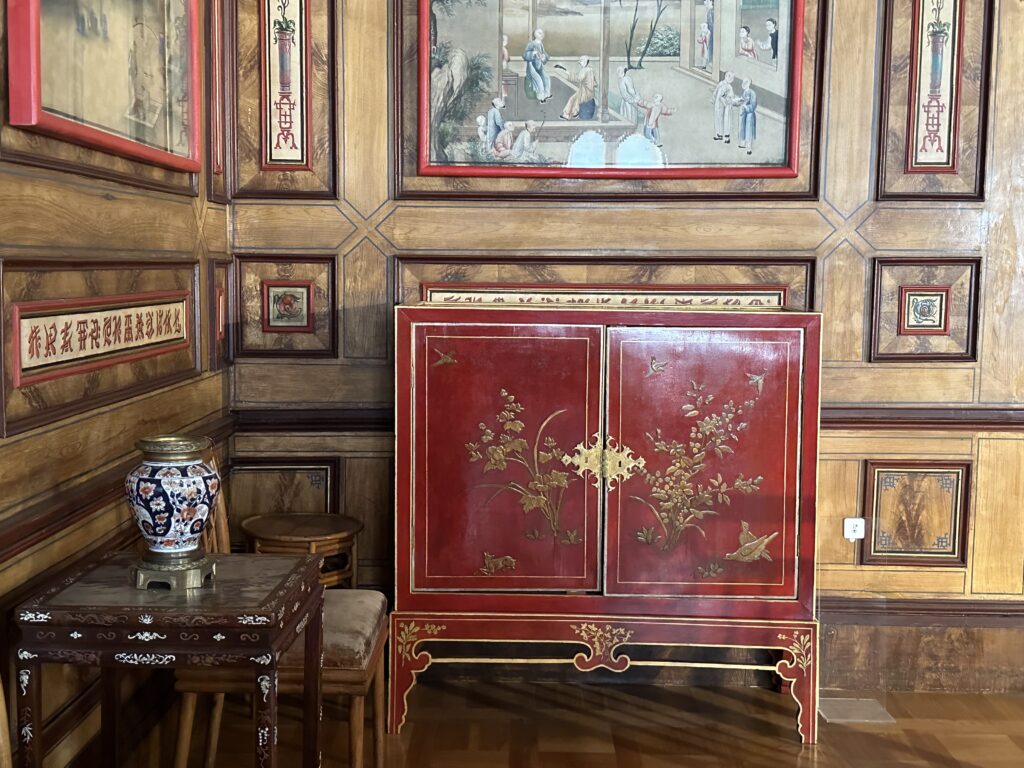
The Chinese Room at Wilanów Palace, Warsaw, Poland (photo private)
A key element of a Chinoiserie interior was the display of ceramics. With the establishment of powerful global trading companies like the British East India Company, the Dutch East Indian Company (VOC) and the French East Indian Company in the seventeenth and eighteenth centuries, Asian goods began to flow into Europe and sold at auctions.
Due to the high costs and lengthy journeys undertaken by these trading companies, Chinese porcelain became a sought-after symbol of luxury and global connections.
During my visit to the ‘Chinese Room’ in Wawel Castle, Krakow, I was impressed by the elegant display of blue-and-white Chinese porcelain and how such exquisite objects graced the palace.
Distinguishing between original Chinese porcelain and European imitations can be a challenge. Take, for example, this blue-and-white porcelain vase. Only through careful scrutiny and research can we fully appreciate its defining characteristics: the delicate underglaze cobalt blue painting, the smooth texture and whiteness derived from kaolin clay, and the lustrous, translucent glaze. These features definitively classify this vase as true hard-paste Chinese porcelain.
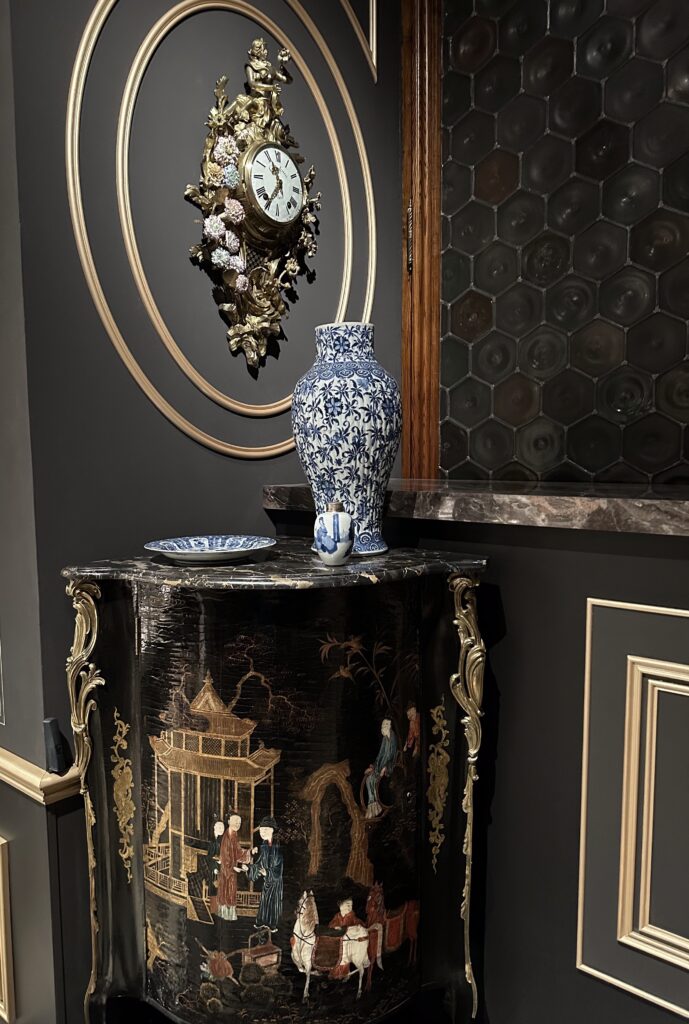
Wawel Castle, Krakow (photo private)
The desire of such luxurious ceramics fueled European manufacturers to develop their own versions. However, in the seventeenth century, Europe still lacked the technology to produce true hard-paste porcelain. Undeterred, these manufacturers sought to emulate its qualities, leading to the development of soft-paste imitations.
These soft-paste porcelains, fired at lower temperatures, exhibited a more delicate structure and less intense translucence compared to their hard-paste counterparts. A prime example is this Guanyin figure, which beautifully captures the aesthetic of the exquisite white porcelain figures produced in the kilns of Dehua, China.
Derived from the Indian Bodhisattva Avalokiteshvara, Guanyin is a revered deity in East Asian Buddhism, embodying the virtues of mercy and compassion. This particular Guanyin figure, crafted in Ansbach, Germany, around 1720, features overglaze painting and gilding, resulting in some fading over time. It is a type of faience, meaning it is made from local clay rather than the kaolin clay used in true porcelain.
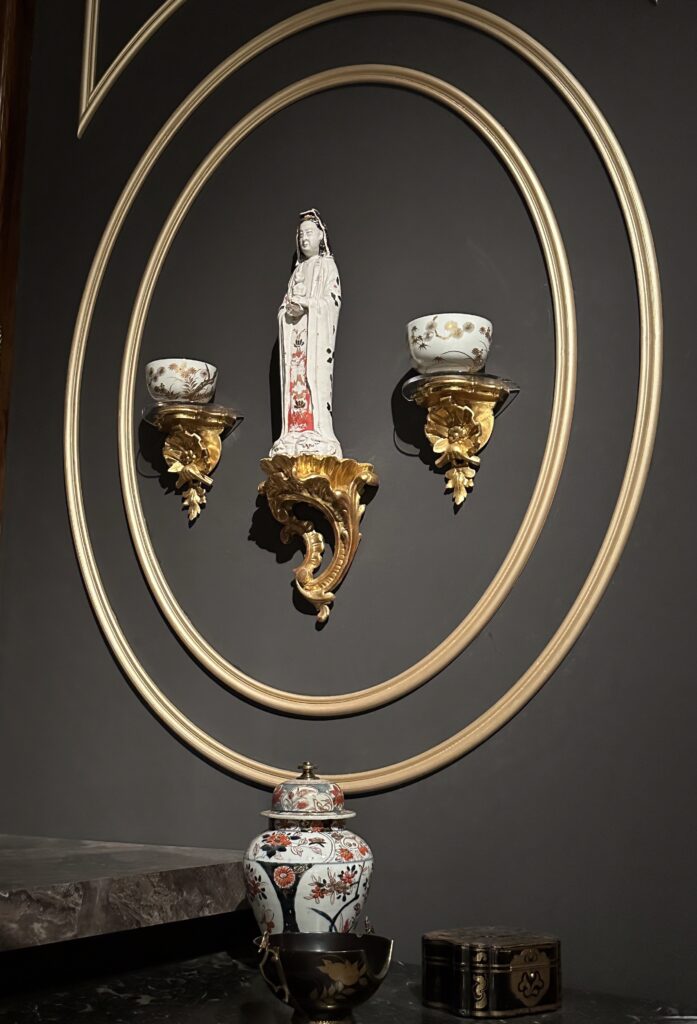
Wawel Castle, Krakow (photo private)
Why was Europe so captivated by Chinese objects? In contrast to the elegance and symmetry of classicism, Chinoiserie presented a playful, novel alternative, even extending to religious figures, where the Guanyin figure offered a different spiritual focus compared to the Virgin Mary. It offered an escape from the everyday through its vibrant colors, asymmetrical designs, and fantastical imagery, transporting viewers to an imagined world of exoticism and wonder.
Chinoiserie’s fashionable status in Britain was intertwined with the burgeoning culture of tea consumption. The social rituals surrounding tea, particularly among women, fueled demand for new and innovative objects. This led to the rise of elegant mahogany tea tables, prized for their portability and lightweight design.
During my June 2024 visit to London’s Victoria and Albert Museum, I encountered a stunning example of this trend: a tripod tea table crafted by Hintz Federick in 1737.
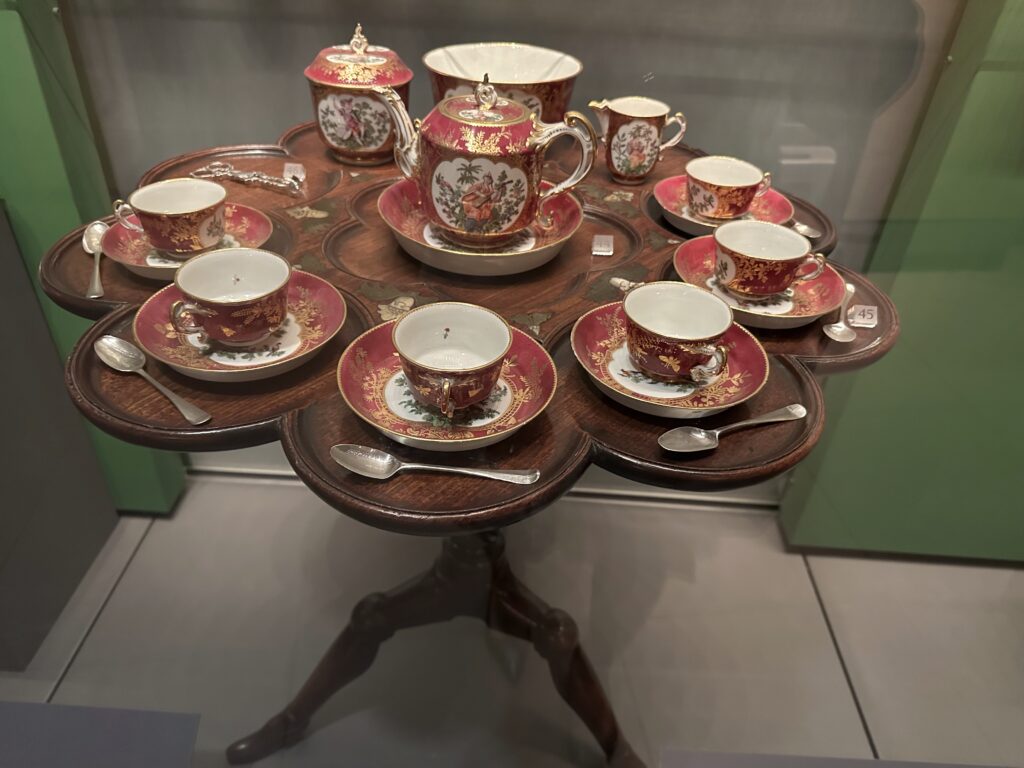
Tripod Tea Table 1737-1738 made in London by Hintz, Federick, V&A South Kensington, British Galleries, Room 52b (photo private)
While tea became more accessible throughout the eighteenth century, the tea table itself remained a potent status symbol. A 1745 observer humorously noted that ‘the tea-table costs more to support than would maintain two children at nurse!’ This highlights the enduring association of tea with luxury and refinement.
The design of these tables, often featuring a tripod base with an elevated surface, ensured that the delicate porcelain teapots and cups became an integral part of the visual display.
As we have seen, Chinoiserie stands as a testament to the enduring human fascination with the ‘other’, a vibrant reminder of how cross-cultural exchange can shape artistic expression and inspire new forms of beauty.